In the wake of my mother’s death in late 2005 from complications of diabetes, I completely overhauled my diet in early 2006. My growing consciousness food extended not only to what kind of food I was eating, but also how food is produced and marketed — & interestingly enough, turns out that there’s a lot of overlap between crap food that leads to chronic lifestyle diseases like Type 2 diabetes, cardiovascular disease, etc. & crap ways of producing foods — for example, the megaindustrialization of food production that has led to the Standard American Diet (SAD indeed) & the preponderance of vending machines, fast foods, & the carbs in a box that fill out our grocery store shelves.
To my mind, the industrialization of the food system is not only just as antidemocratic as the rest of the corporate way of doing things, but is unhealthy to boot. So thank goodness for the farms of the Mat-Su Valley, whose in recent years have been bringing fresh, Alaska-grown produce into Anchorage grocery stores and farmer’s markets. What’s more, now there’s a Mat-Su based community supported agriculture program that weekly (except the first week of each month) delivers boxes of fresh Mat-Su produce to Anchorage subscribers (as well as subscribers in Eagle River, the Mat-Su, Girdwood, & Homer).
I learned about Glacier Valley Farm CSA a couple of weeks ago, & immediately made my first order. Yesterday I went to pick it up.
What’s community supported agriculture? Glacier Valley Farm CSA’s website explains it very well:
A Community Supported Agriculture program is a community of people who pledge support to a farm operation so that the community feels a sense of ownership of and responsibility for the farm. The growers and consumers support each other and share the risks and benefits of food production. Subscribers to the CSA program pledge some amount in advance to cover some of the anticipated costs of the farm’s operation. In return, they receive shares in the farm’s bounty throughout the growing season, as well as satisfaction gained from connecting with the land and participating directly in food production. Members also share in the risks of farming, including poor harvests due to unfavorable weather or pests. By selling directly to community members rather than selling their produce wholesale, the growers receive better prices for their crops and gain financial security, because they have a guaranteed market for their vegetables.
Glacier Valley Farm CSA is operated by Arthur Keyes of Glacier Valley Farm in Palmer — who also started the South Anchorage Farmer’s Market in 2006 with his father-in-law Ben VanderWeele — and Alison Arians, a farmer’s market customer who now runs the CSA’s website (as well as the South Anchorage Farmer’s Market website) and writes the CSA’s weekly newsletter. She’s also has a blog, Alison’s Lunch, about cooking & eating local food, & is the author of the South Anchorage Farmers’ Market Cookbook, which one can buy at the CSA website. Or, I learned last Saturday, from my favorite writing venue, Side Street Espresso, which gets its bread — good stuff! — from the Rise & Shine Bakery owned by Alison & her husband Dan. GVFCSA fills its boxes with produce not only from Glacier Valley Farm, but also from other Mat-Su farms including VanderWeele Farms, Three Bears Farm, Stockwell Farms, Bush’s Bunches, Lewis Family Farm, and (next summer) Kenley’s Alaskan Vegetables. During the winter, when the Mat-Su is under snow, local Alaska produce is mainly of storage vegetables like potatoes, beets, carrots, & cabbage, with greens & other fresh veggies & fruits shipped up from organic producers in the Lower 48.
I was very glad when I checked the CSA’s website to learn that one of its pick-up locations was Lucy Cuddy Hall on the UAA campus — just across campus from where I work. So a couple of weeks ago I placed my first order, & yesterday walked across campus to pick it up.
As I arrived, three other women were had just finished transferring their produce from boxes to their own bags:
Here’s what my box looked like when I opened it:
The lettuce & arugula were hiding some of the other goodies in the box, so I lifted them out of the way to get another photo:
I transferred the whole works to my pack, using a plastic bag as an inner liner.
Glacier Valley Farm CSA resuses the boxes, so before I left Cuddy Hall I did as as people before me had done — broke down my box to make it easier for the CSA to pick them up. There were still a number of boxes that hadn’t yet been picked up. I counted a total of 13 boxes, both broken down & still full. It’s possible that some people had taken the full boxes, to be returned later — but basically looks like about 13 people in the UAA community (faculty/staff/students) or who live/work in the university area are getting fine quality produce through community supported agriculture. Glacier Valley Farm CSA has another 18 or so pick-up locations for its produce in Anchorage, Eagle River, Girdwood, the Mat-Su, & the Kenai (in Homer).
I take the bus to & from work, so it was important to me that my boxload of produce be something I could carry. No problem! — though I got quite a bit sweatier humping it on my back across campus to my office (since I still had another hour at hour at work). Not so bad going home — the cold outside more than took care of the heat I generated from carrying it. Good exercise, I reckon. Once I got home with it, I put my pack on the scale & found I’d carried 25.2 pounds — of which probably about 22 pounds was the produce.
Here’s what was in my box:
From Glacier Valley Farm and VanderWeele Farm in the Mat-Su:
- 5 onions
- 10 potatoes
- 1 large head of cabbage
- 3 beets
From the Lower 48 (all certified organic):
- 3 Pink Lady apples
- 3 Cara Cara oranges
- 3 kiwi fruit
- 1 large head of green butter lettuce
- 1 big bunch of arugula
- 1 bunch of watermelon radishes
- 4 garnet yams
- 1 box of grape tomatoes
Not bad for $35 — & all of it of very high quality. Here’s some of it after I unpacked it at home onto my kitchen counter.
Here’s a closer look at the radishes. Big, plump, & gorgeous. Not only that, but attached to them are those great radish greens. It’s incredible to me that I used to just throw away radish green. It wasn’t until three or four years ago that it occurred to me that, hey, might they not be edible too? Well, of course they are! They can be used just like any other greens in salads, soups, etc. It’s a good idea, though, to separate them early from the radishes themselves — they’ll keep a bit longer that way, but will get slimy & yucky pretty quickly if you store them with the radishes still attached. (I also use carrot greens — not in salads, as their kind of ropy for that; but they go well in soups, as the heat makes them more tender.)
A closer look at the onions. These were grown right here in Alaska. Onions are a staple in my diet, so I’m very happy to have these.
The little plastic produce box of grape tomatoes from a organic farm in California were a nice surprise — they were an addition to what Glacier Valley told us would be in this order.
Here’s a couple of the Alaska-grown beets.
I’ve never been a big beet fan, but they’re so damn good for you (see what the World’s Healthiest Foods website has to say about them — which is a powerful motivator for me to learn to like them more), & I don’t actually hate them… so darned it I’m going to let them go to waste. I decided to include some grated beet in a salad.
Here’s the salad I made last night, making use of several items from my order: butter lettuce & arugula, radishes, grated beet, the entirety of a small onion, & a few of the grape tomatoes. I made enough for dinner last night & lunch today. For last night’s salad I added in some canned tuna & a small handful of mixed nuts & seeds (sunflower & pumpkin seeds, almonds, walnuts, brazil nuts). Today’s lunch has the mixed nuts & seeds, but the protein addition today was salmon.
Last night’s dessert: a kiwi fruit. Mmmmm was it good — I didn’t realize I liked kiwi fruit so much! Isn’t it nice they’re good for me too? — Issue #56 of the Glacier Grist (Glacier Valley Farm CSA’s weekly newsletter) informs me that kiwis “contain about as much potassium as bananas, and also contain 1.5 times the Daily Reference Intake for Vitamin C. It is also rich in Vitamins A and E. “
And then I couldn’t help myself, & also had one of the Pink Lady apples. Dessert for lunch today is one of the oranges.
What will I do with the rest of my order? Well, I’ll want to use the lettuce & arugula pretty fast, so they don’t go bad before I eat ’em — so more salad for the next couple of days. I took two yams, two potatoes, & one of the beets over to my friend Sylvia last night, since she has a limited income & doesn’t often have opportunity to get good produce. The other two beets will go into salads, soups, whatever… I usually have to mix them with other stuff because I find them too sweet on their own. (Kiwi fruit are sweet — why do I have no problem with them on their own? Beats me.) I have to figure out how I’ll use the potatoes and yams — since overhauling my diet in early 2006, which included learning all about the glycemic index, I’ve tended to avoid starchy vegetables. But it shouldn’t be a big deal to just space out my consumption of them. The head of cabbage — which for some reason I didn’t get a picture of — I think I’ll make into a jar of homemade sauerkraut.
Glacier Valley Farm CSA delivers every week except the first week of the month, which works out fine for me because it’ll probably take a couple of weeks for me to eat all this stuff anyway (along with the produce I still had in my fridge from my last trip to Natural Pantry). But I only have to order anyway when I want to. Since I (mostly) live alone, a box every other week will probably suit me pretty well.
I’ll be making another order tonight, which will be delivered February 10. Per GVFCSA, that order should include:
- From Alaska’s Glacier Valley Farm & VanderWeele Farm: Alaskan red or yellow onions – Farmer’s Choice | Alaskan Red or Yukon potatoes-Farmer’s Choice | Alaskan Spaghetti squash or from Outside certified organic butternut | Alaskan carrots |
- From Outside: certified organic Fancy Fuji apples | certified organic large navel oranges | certified organic kumquats | certified organic romaine lettuce | certified organic Rainbow chard | certified organic sunchokes | certified organic broccoli | certified organic Butternut squash or Alaskan Spaghetti squash-Farmer’s Choice
Yum. Mat-Su carrots are the best. I’m not as thrilled about the squash — I’ve never liked squash — but Sylvia likes it, so it’s all good.
Already, having eaten just two meals from my first produce box, I feel that same sense of fulfillment that I get from farmer’s market food in the summertime. It’s partly because Alaska-grown food is so good. As Arthur Keyes writes:
Alaskan agriculture is the pinnacle of quality and cleanliness. Alaskan carrots have three times the sugar content of the carrots that are being shipped up here, and you can taste the difference! Alaska’s water is pure and our soils are clean. We lack the vast majority of pests that our southern neighbors deal with on a regular basis.
But it’s also that it feels good to support local business & local farmers — contributing to their success, just as their food is contributing to mine. It feels altogether different from buying & eating some kind of boxed food-like product manufactured by some megacorporation, or even getting from buying produce from Carrs or Fred Meyer or even the Natural Pantry, where I don’t have any real sense of connection with the people who grew it. When you buy & eat local, you really are forming a connection and a sort of gift exchange with other people in your community, which is good for our health politically, economically, & spiritually too.
And I’ve gotta say that after last summer’s import of people from Wasilla to testify against equal rights in Anchorage, it’s awfully nice to enjoy & celebrate the real goodness & bounty that is native to the Mat-Su.
Thank you, farmers of Mat-Su. You rock!


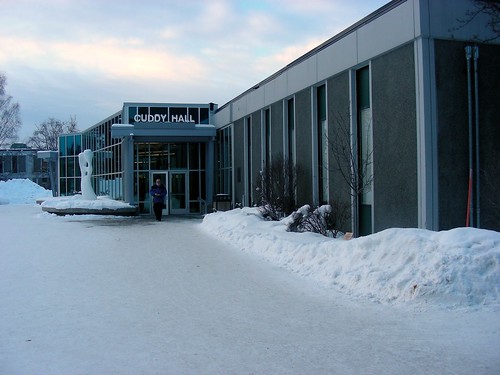

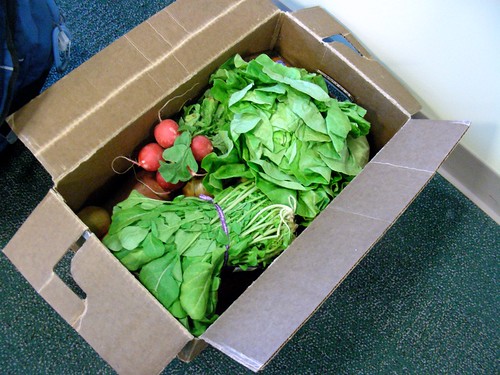
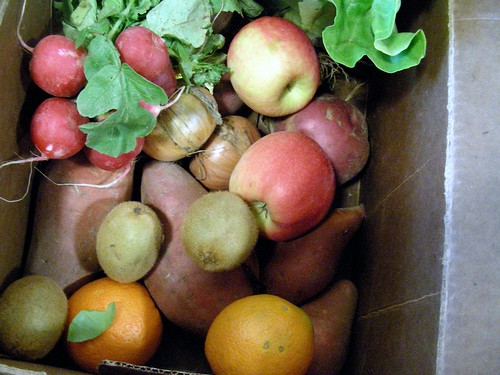


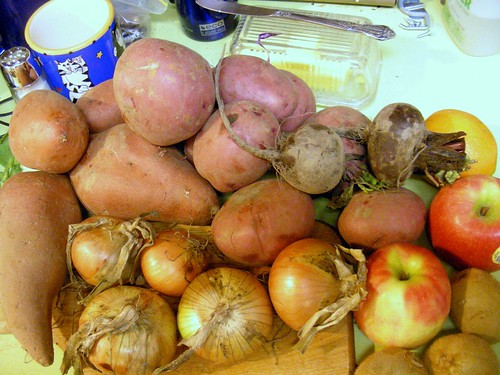
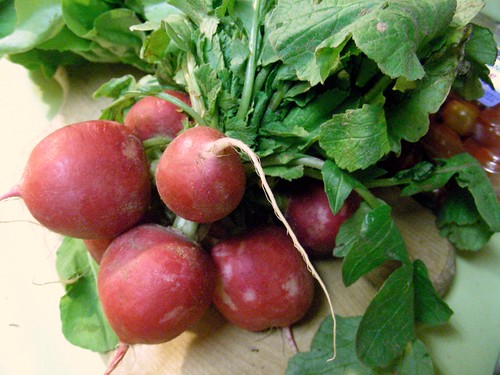
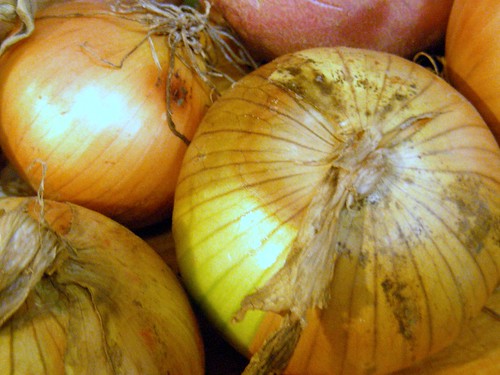

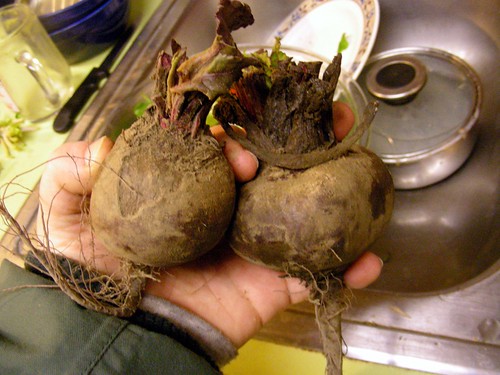

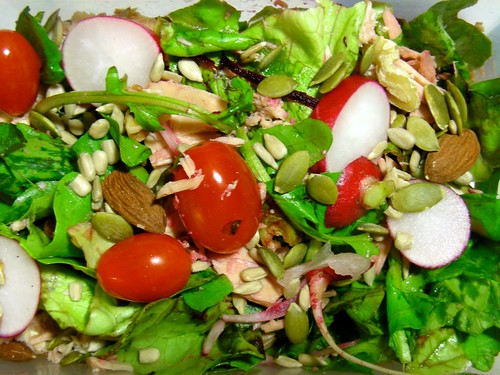
Looks good Mel, and as you say, very satisfying.
Beetroot is really nice eaten with feta cheese, after boiling it and pickling it with vinegar. Another good way to eat it is to bake it, it’s delicious that way as well.
Your salad looks absolutely gorgeous! Thank you for posting your comments and experience in receiving your Glacier Valley box.
My salad tasted really good too! You might also like the post I wrote last night about the produce box I got this week, plus the really wonderful sauerkraut I made from the reaally wonderful Mat-Su-grown cabbage I got in the first box.
Thanks again, Nancy — I can’t say how happy I am with Glacier Valley Farm CSA.